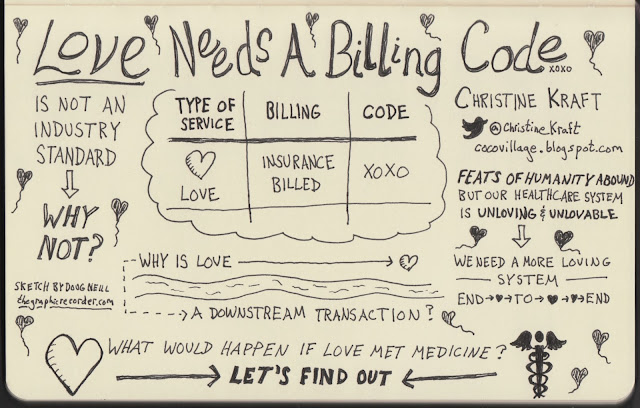 |
| Sol LeWitt - Wall Drawing 999 (Mass MoCA) |
I'm naming this sneaky little narrative. I'm calling it The Myth of the Professionalized Patient. A myth is powerful and sells transformation. A myth is always at the heart of any product we desire. That's precisely why the Myth of the Professionalized Patient is such a powerful one for industry and for government interests.
What traits does the Professionalized Patient possess?
An archetype consumer, a master of health, the professionalized patient:
- Demonstrates a sublime use of administrative tools
- Gracefully tracks key data while complying with doctors orders (dispensed online in real time)
- Is a model patient; he doesn't mind reading fine print online
- Is highly literate and can negotiate the complexity of health care products and systems for self and others
- Effortlessly adapts to (some say thrives on) change
You get the picture...
We covet a clean, state-of-the art health system, but cold, clean, technical care is just one of many healing modalities appropriate to our system today. It isn't the only one within reach.
And yet now all all swept up into a tidal surge to become professionalized patients; expected to handle our burdens with dispatch and optimism, atop the desktop or mobile device. No crying, no hugging, no eye contact allowed.
Commentary aside, I believe that the Myth of the Professionalized Patient is accelerating us unconsciously toward adoption of a system that does not look out for our interests. We won't even know what hit us when we wake up.
Will patient engagement metrics (page views per month, number of e-mail messages sent, lab reports viewed online, etc.) be misconstrued and marketed as evidence encouraging the growth of online channels?
With this will there come a potential to swiftly promote expansion of the electronic nurse-caregiver persona ... before we even meet her?
What about the big picture? Do you find it alarming that the the more responsibility industry and government places on individuals to act like Professionalized Patients - to achieve desired health measures - the less responsibility these sectors will have for legitimately uprooting the social determinants of health that trap many of us at some point in our lives?
Pay attention. Since we are a fee for service system, the more these sectors are positioned to fine and/or penalize consumers for coming up short and not measuring up to the archetypal professionalized patient, their authority over us grows.
The story around the Professionalized Patient is bound to get more traction. It is futuristic, sexy and efficient. Who wouldn't want to believe? Yet human fallibility trumps tech efficiency.
Humans in the raw are not sexy. We age and don't like change. We don't tell the truth, get sick and then have a hard time following doctor's orders. We're busy and think we're right. We are distracted and want to feel better, have a good time and not work too hard. It's not a selling story, really. It's just the story of health in 2013.



